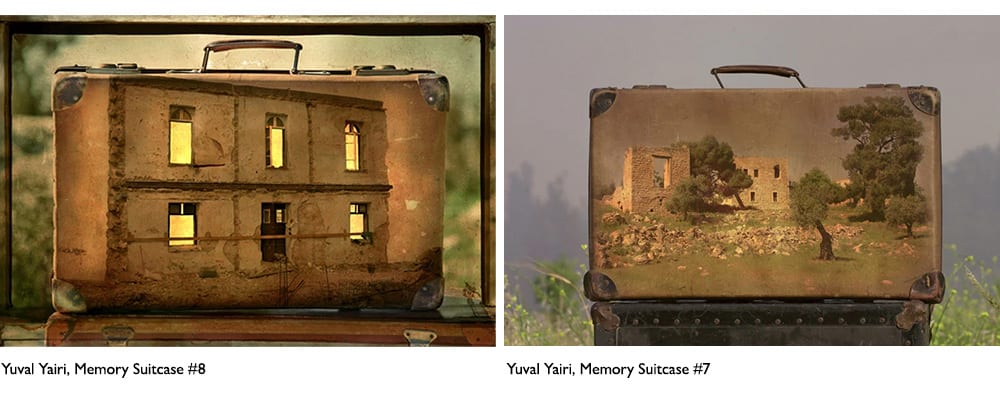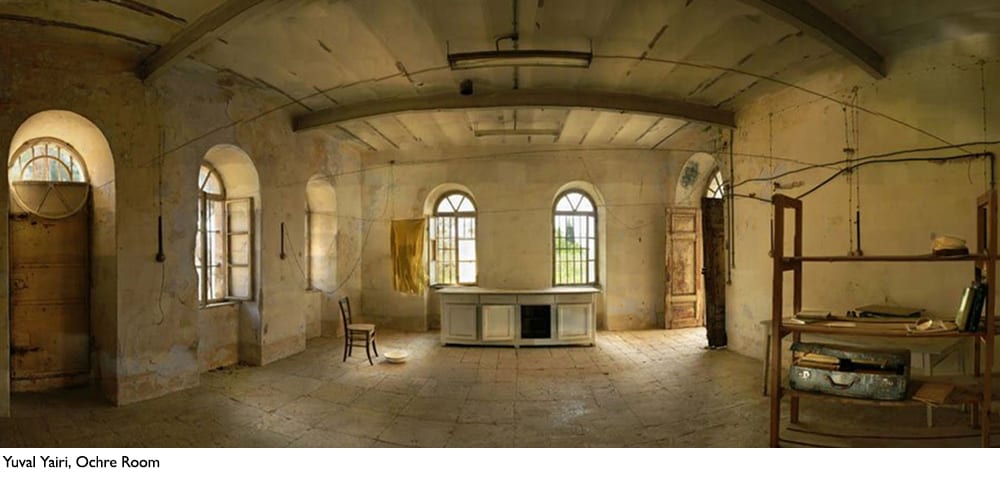Explore Yuval Yairi’s captivating journey through his interview, where he unveils the intricate fusion of biography, memory, and politics in his thought-provoking photography. Delve into his autobiographical works, such as “The Savoy” and “Surveyor,” where personal narratives intertwine with historical events, inviting viewers to ponder the nuanced layers of meaning within his meticulously crafted compositions.
Luntz – Is there a biographical component to your work?
Yairi – I believe there is a biographical aspect in most of my work, although not always intentional/deliberate. Sometimes during the process, in an unconscious manner, some biographical elements blend in. Other times, the presence of a biographical component surfaces afterward. I can speak of 2 projects in which the biographical components stem from their subject:
In my first autobiographical work titled “The Savoy” (2009), I created a series of constructed photographs describing an imaginary space – a simple, cheap hotel room and a nude woman laying/posing in various positions on a bed, with some objects and clues to a past event, and some references to classic paintings in art history, from Giorgione’s Sleeping Venus and Venus of Urbino by Titian, to Goya’s Nude Maja, Olympia by Manet and a nude by Lucian Freud. The event I refer to is a terror attack on the Savoy hotel in Tel Aviv (1975) when eight terrorists landed by boat on the shore of Tel Aviv and captured hostages inside the nearby hotel. My father (Uzi Yairi), the former commander of the elite unit that entered the hotel to rescue the hostages, voluntarily joined the force that burst into the hotel and was killed during the rescue attempt. I was 13 years old at the time of the event.
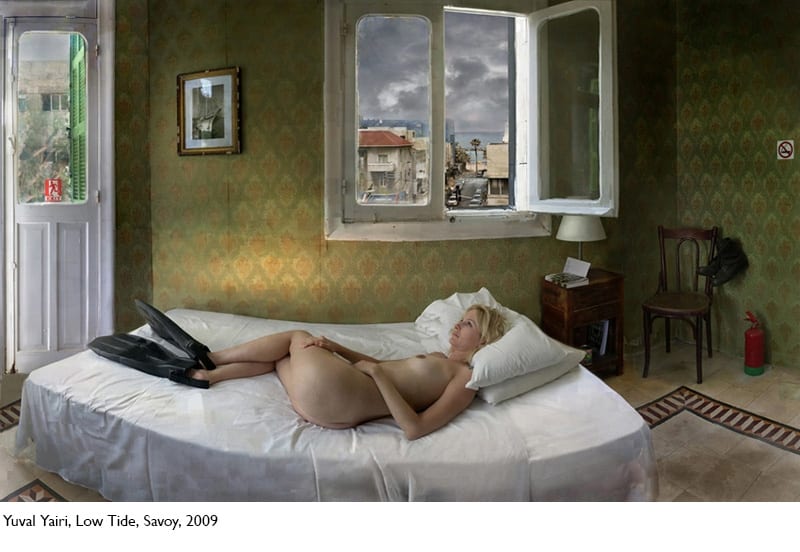
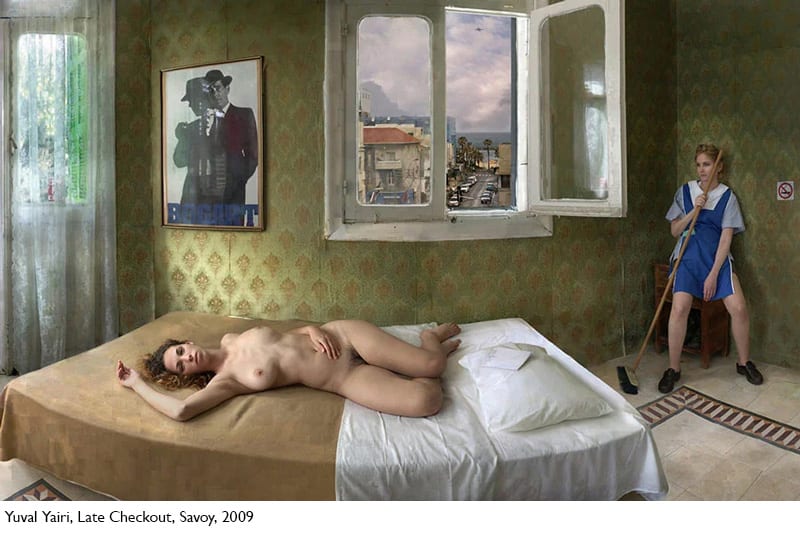
In 2015-2016, I worked on the body of work titled “Surveyor.” Here, I related to a period in my life, during my military service in the IDF, serving as an aerial scout in the First Lebanon War (1982), and other events during my service which left a deep and traumatic impression on me. Some of the events I wished to refer to can’t be talked about freely (too many secrets), so in order to express myself, I invented the figure of the “Surveyor” I call him my semi-fictional alter-ego; he holds the key to my subconscious and repressed memories. From there, (the Surveyor) extracts images, sounds, smells, and emotions and helps me process and convert them into an encrypted and symbolic language. Some of the works in this project are single-frame photographs, while others, mainly the exteriors, are constructed from multiple images placed inside a grid. The grid turns the whole image into a map.
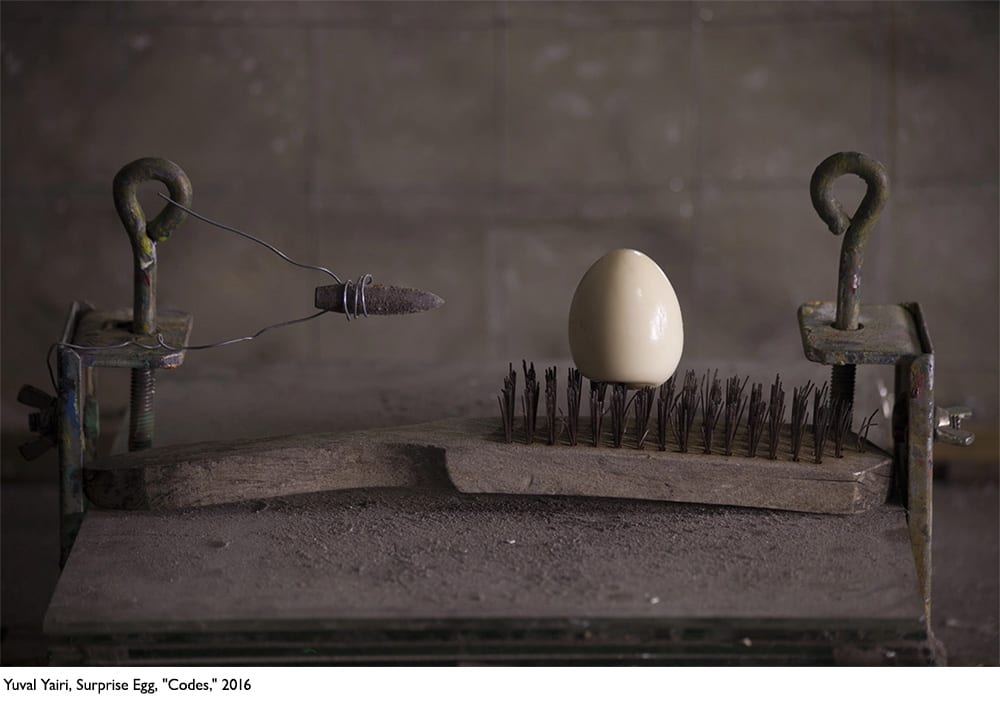
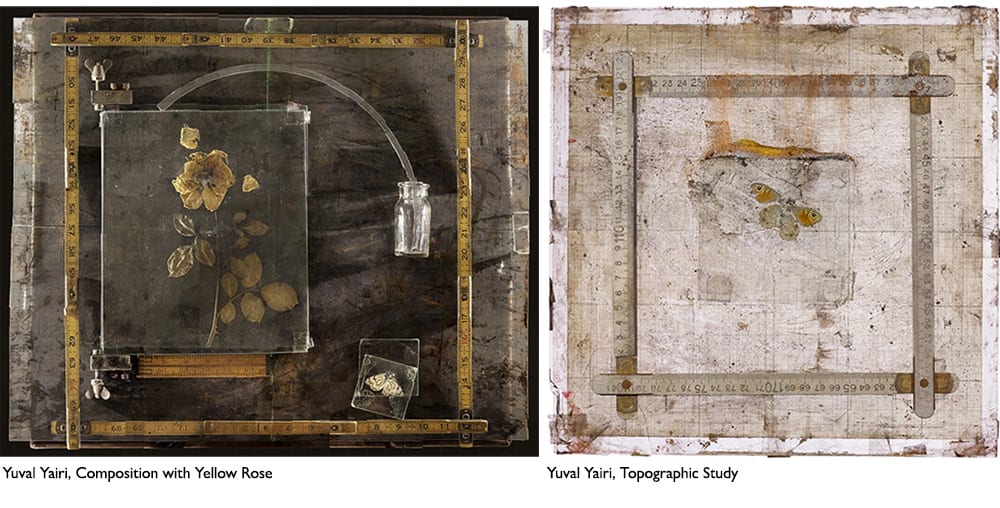
Luntz – Some of your work consists of many individual photographs collected together to form one final composite image. On average, how long does it take to create what you would consider a final piece?
Yairi – The works in which I use this technique can take around a month to complete. Photographing the details may consist of repeated visits to the site and spending several hours each session observing and documenting. This phase can take days or weeks. Then comes the selection and construction of the image from the sometimes thousands of individual frames. This process can also take several weeks. But it’s ok; I’m not complaining.
Luntz – How do you go about creating a photograph? Do certain objects inspire you, or is there a more calculated way of working from a plan?
Yairi – Most of my projects are spread over long periods of time; it can take two or three years to reach from a preliminary idea to a finished body of work. It starts with an idea that I wish to convey. It usually comes after or during research of the subject that I’m interested in. While reading and investigating through various types of sources, images start to rise in my head, and then I might look for places and objects that can represent or support this idea. In other cases, I create/construct the places and objects in my studio or find a space which I can alter according to my needs. Objects often do inspire me; it can be an old armchair found in an abandoned house that can keep me busy for two months, a set of dusty bottles that become symbolic elements in a composition, or a worn-out suitcase which triggers me to go on a road trip around Israel.
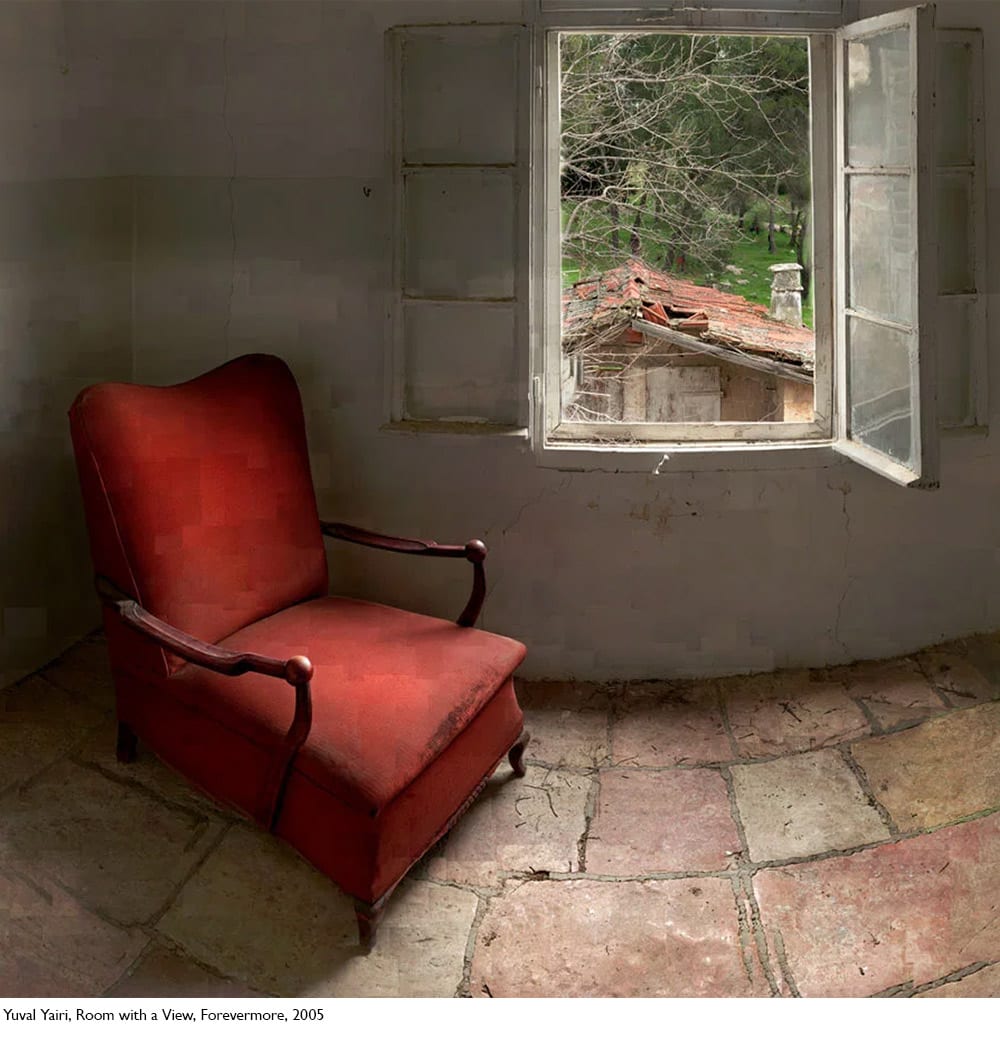 Luntz – Are there political elements to the work and to the particular places you examine in your images?
Luntz – Are there political elements to the work and to the particular places you examine in your images?
Yairi – Living in Israel, it is hard to avoid relating to political issues. Some of the works are more political than others. You can find a political aspect looking at the “Memory Suitcases,” while in the project “LAND,” the political is obvious and in the core of the subject.
Some of the memory suitcases images are of abandoned houses once belonging to Palestinian Arabs who escaped or were evacuated from their homes during the 1948 and 1967 wars. Some houses have remained untouched and decaying ever since; others inhabited by Jews who immigrated to Israel following the Holocaust during the Second World War. These buildings are reminders to past events we may try to forget or erase, while many Palestinians still keep the keys to these houses as mementos or in the hope of returning.
My “LAND” project (2011-2013) began by examining the implications of placing the typography of the words LAND and MAN in the topography of an area which was, until 1967, marked in maps as No Man’s Land – on the border between East & West Jerusalem. Performing with the word LAND in this area was immediately interpreted as a political statement by passers-by, seeing it as a provocation or demonstration, or as a declaration of ownership of the land. Whose land is it? The final work which concludes the project was the video and a series of still images titled LAND (2013).
LAND, 2013 (in collaboration with Zohar Kawaharada)
Holding a pole and the four letters of the word LAND, the figure undergoes transformations in its differing relationship to an enclosed space and to the word itself, performing ceremonies and rituals, examining the idea of historical, religious, or moral rights to a place, rights which are often enforced by violence – occupation, illegal settlement, colonialization, deportation, exile. The attitude of the human figure changes from a love of homeland and the desire for self-sacrifice to surrendering to fate, a feeling of claustrophobia and despair, and the desire to break away and leave for another place.
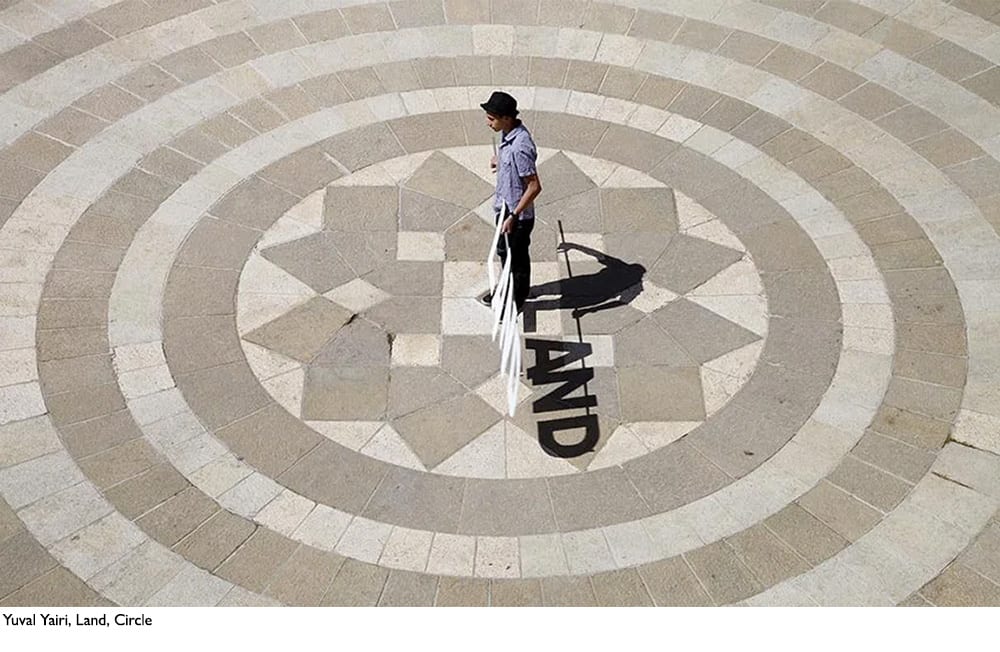
Luntz – Your work also explores the relationship between memory and photography. What can you make of the power of photography to influence an idea or to be able to change how we remember our collective memories as a society?
Yairi – Forevermore (2003-2005) was my first significant project as an artist, photographing an old Leper Hospital in Jerusalem. At the time, the building was nearly abandoned; it contained numerous testimonies and remains from its past, making it a perfect place for practicing slow-observations while researching the history of the place. Then, I started to think and question the relationship between photography and memory (does a photograph serve as a memory-aid, or is it a substitute for memory?) I read some texts about the “Art of Memory” – techniques for memorizing and remembering, dating back to ancient Greece.
I was especially fascinated with a mnemonic technique of creating Memory palaces, which I found to be relevant and connected to the way I work. This method can be used for memorizing large amounts of information by creating imaginary places in your mind and placing mental images in them, which symbolize the things you wish to remember. The memorization is done by walking through these imaginary spaces and collecting these symbolic objects. Inspired by these methods, I started to change the spaces I was working at; by emptying them of their contents and placing within them objects taken from other places, creating my own palaces of memory.
In my work, I refer to the act of observing and photographing as the Memorizing stage; it takes place simultaneously in my mind and on the memory card of the camera, natural memory, and artificial memory. The recollection or the Remembering is the time when I put together the different segments of the space into one picture. Working this way allows me to have a deeper and more detailed acquaintance with the space in which I work. It intensifies my memory of the place and stretches this memory beyond the limitations of one moment (which is typical with traditional photography).
I titled my next body of work “Palaces of Memory,” this time, instead of focusing on one place as I did in “Forevermore,” I searched for different locations that suited the subject of memory in broader contexts: places of personal, historical, or collective memory, places related to preservation or perpetuation, and places of forgetfulness and denial.
For example, I photographed the library & study room of Israeli writer S.Y. Agnon just before it was dismantled and packed-up for renovation and preservation. What took me the most was the similarity between the dismantling, packing, and storing of the library in marked boxes in order to return the books to their original place at the end of the process – to the way that I work – disassembling, retaining in memory temporarily, and then reconstructing anew. The technique causes some distortions and mismatches between the frames; it can be because of light changes or slight shifts of perspectives while photographing. I let these traces of imperfections stay evident in the final work – Traces of gazing, observing, and memorizing, and a reminder that memory never perfectly resembles reality.
Luntz – Is the act of revisiting a place an important process for your work? You have mentioned that you often visit sites several times as you are creating an image. Is there something you want to capture in the subtle differences between one day and another?
Yairi – In most cases, once I decide on a location to photograph, I start by visiting the place and getting to know it, first by just observing, taking notes of changes in light conditions along the day, and finding the right spot and the exact point of view. When working outside, the seasons of the year may also be taken into consideration.
An example of such work is Surveyor (2015). It was done in the Judean desert, end of winter till the beginning of spring, the only time of year when the land is covered with green grass. The first time I photographed, I focused only on the landscape. On my next visit, a week later, I photographed a young man (my son) standing near a viewing device that I built. On another visit, I asked my son to perform a ritual of walking in circles on the opposite hill and pulling a rope tied to the center of it while I followed him through the lens, photographing him at several points along the path. A week later, I saw a donkey walking towards the center of the scene, so I waited until it stopped where I was hoping it would and photographed it. Meanwhile, as the grass on the opposite hill kept growing, and small purple flowers began to bloom, I re-photographed the hill. During the whole process, I used a narrow-angle telephoto lens and documented the scene in small fragments, so eventually, I had close to 2,000 frames taken at different times to work with and compose into one final image.
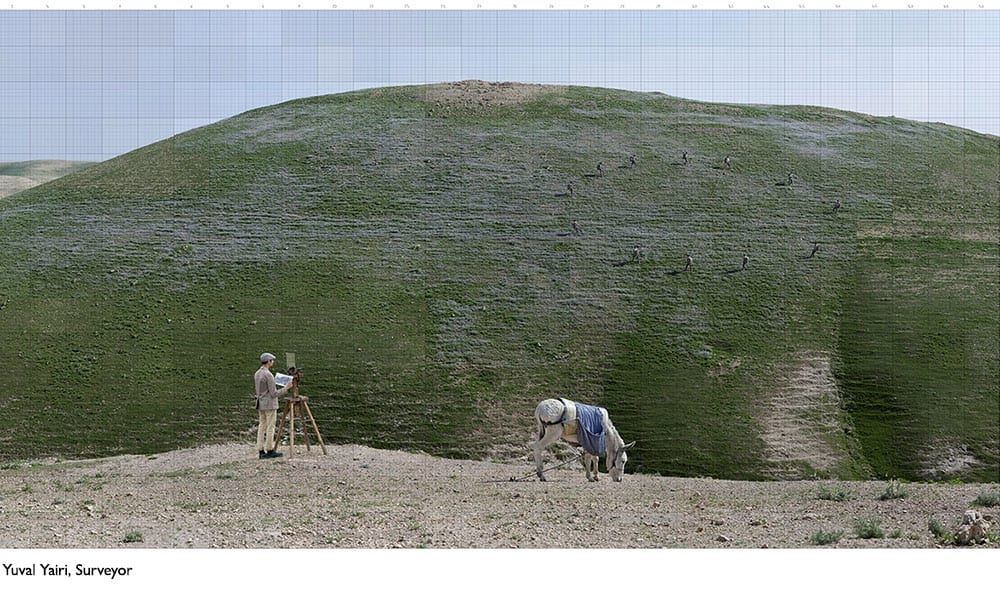
Luntz – Detailed, prolonged observation in art is traditional of painting and sculpture, as they ultimately become creative imitations of reality. Realist painters like Antonio Lopez Garcia or even the work of David Hockney come to mind as they show the artist as a craftsman that uniquely presents the observable world. Does realist work influence your practice?
Yairi – Realistic painting, mainly painting from observation, has some similarity to the approach I adopt while observing and photographing when working on my composed images. When drawing or painting from real life, you usually look at details and ‘transfer’ them to the canvas, working back and forth from looking at the object to the painting’s surface. You don’t take the whole scenery at once, but gradually, part by part, like the way these photographic images are constructed. It’s a process that requires a much deeper and in-detail observation than when working in traditional photography. Another aspect comparable to painting is the option of laying additional layers to the work, covering or replacing certain areas of the image.

Yuval Yairi is a contemporary Israeli multimedia artist, primarily working with the mediums of photography and video.
Yairi was born in Israel in 1961 and currently lives and works in Jerusalem. He graduated from the visual communications department at WIZO Haifa Academy of Design and Education in 1988. Between 1988 and 1999, Yairi served as the director of a design studio in Jerusalem, where he produced and directed short films and documentaries. Since 2004, Yairi has been working mainly with photography and video, exploring places charged with historical, cultural, or political significance, which are also associated with his personal story and memory.
As Yairi creates different photographic projects and series, whether at a Leper Hospital or a renowned writer’s library, an abandoned Arab village, a hotel room, or a museum undergoing renovation – all are transformed through Yairi’s aesthetic and perspective, deconstructing and recomposing spaces, times, and events.
Yairi’s works have been featured in international museums, galleries, and festivals worldwide, including in cities like New York, Amsterdam, Copenhagen, Berlin, Kolkata, to name a few. Yuval Yairi’s work is also included in public and private collections. He is a recipient of the Ministry of Culture Award for Visual Arts, 2017.

